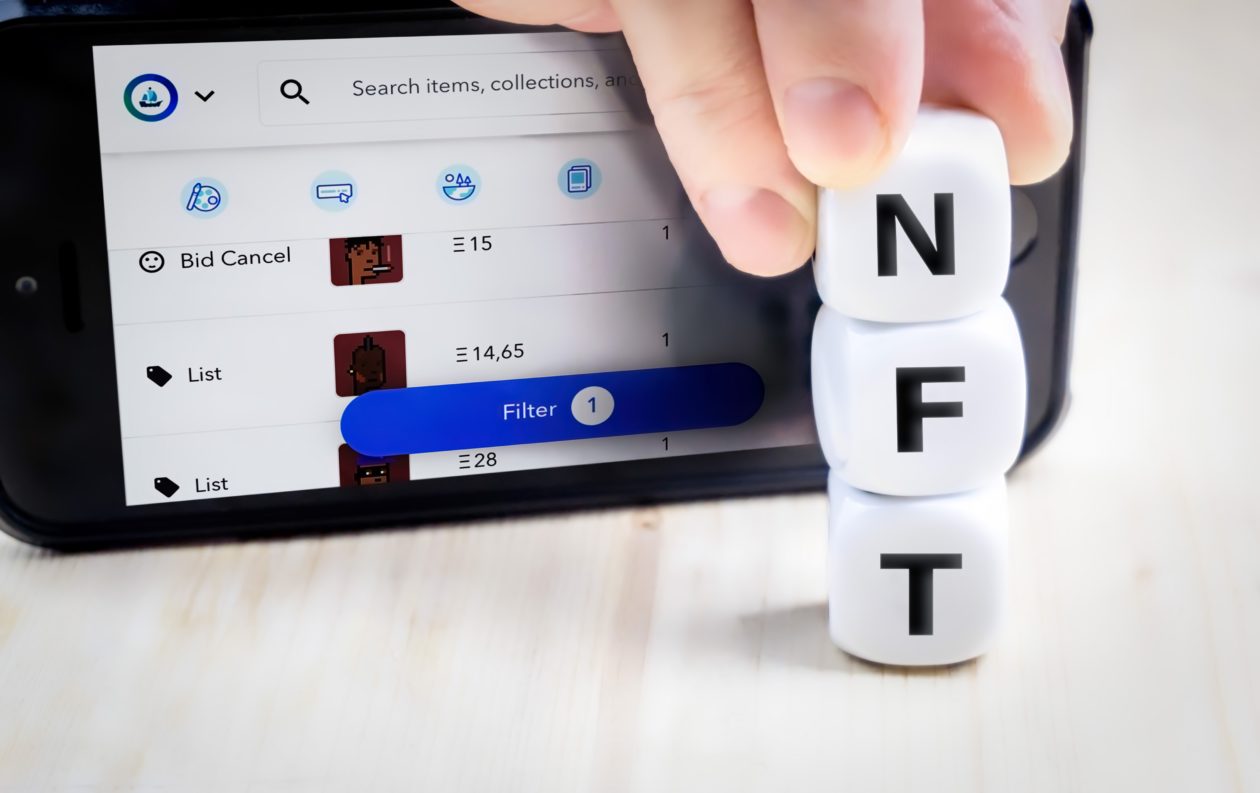NFT collectibles are an outgrowth of the art market’s 21st century march towards technology, democratization and commodification — and they’re here to stay. As of September 2021, the aggregate sales value of NFTs in the art market totaled approximately US$774 million. Yet before the Covid-19 pandemic, most art collectors had not heard of non-fungible tokens (also called NFTs) and those who had largely dismissed the digital assets as bad art, vehicles for dirty money, or both. What changed, why would anyone pay for digital images they could download for free, and what should art collectors consider before acquiring an NFT?
In brief, five factors converged in 2021 to launch the initial NFT boom: First, during Covid-19 the artworld mirrored our broader society’s physical isolation and rapid adaptation to the digital world, therefore driving artists, collectors and brokers towards innovative engagement strategies. Second, market-makers recognized that NFTs’ immutable cryptographic signatures solve two issues that persistently bedevil the art market: proof of artwork authenticity and ownership. Third, reputable entities mainstreamed NFTs, starting with the splashy US$69.3 million dollar hammer price for a single NFT sold at Christie’s in March. Fourth, independent experts started educating art collectors about NFTs. Fifth, the growing population of “digital natives” with disposable incomes has given rise to more common adoption of virtual assets.


NFT basics: non-fungibility
The NFTs we see as digital pictures, memes, videos or interactive documents called “smart contracts” are visual representations of unique underlying cryptographic data built on a distributed ledger called blockchain technology. An NFT’s data is stored on immutable blockchains (usually one called Ethereum), to which data can be added but not removed. By contrast, fungible tokens such as cryptocurrencies, also built on blockchain technology, are interchangeable. Just as one U.S. dollar is exchangeable for one U.S. dollar, one Bitcoin is worth one Bitcoin. One Litecoin is worth one Litecoin. And so forth.
To help conceptualize how an NFT’s data is stored on blockchain, imagine boxcars containing information rather than dry goods, permanently linked together as a linear train. More boxcars carrying additional information may be added to the back of the train, but not to the front or middle, and the data on board can never be removed. Each train is unique and therefore not interchangeable with another train. Anyone can see the train or the NFT exterior, but only with permission can one see the ownership data or other content carried inside each container. One may know, for example, that Damien Hirst created (or “minted” in current parlance) an NFT picture featuring his famous dots, but ownership information of each NFT is only as public as the buyer decides to make it.
Adaptation and innovation during the pandemic
As in other industries, quarantines and travel restrictions shuttered or disrupted the art trade’s primary distribution channels during the first 18 months of the pandemic. To adapt, galleries, fairs and auction houses created or further developed their online sales and content platforms, which proved attractive to house-bound art collectors. According to the UBS Art Market report, for example, online sales accounted for 37% of art dealers’ sales in 2020, more than twice the amount in 2019.
Quarantined artists also innovated and expanded to the NFT space during Covid lockdown. No longer the sole purview of gamers, computer coders and other art world outsiders, respected contemporary artists like Damien Hirst embraced the medium. In addition to a new creative medium, an NFT also offers artists greater control and potential profit. As the primary and secondary trading market developed for NFTs, artists learned they could sell their digital artwork without relying on dealers. Moreover, when minting an NFT, an artist may turn on a feature that automatically captures resale residuals in perpetuity, even for those works sold on platforms that deduct small transaction fees.
NFT value proposition
Beyond obvious supply and demand variables, art valuation depends mostly on authenticity and provenance. NFTs provide clarity on these matters: Each time an artist mints an NFT, he or she establishes the work’s authenticity, which is recorded on the underlying blockchain. Each subsequent trade also is recorded on the blockchain, establishing a secure chain of title. This is inherently desirable in a highly litigious trade that is routinely marred by disputes over authenticity and ownership. Thus, just as an artist’s signature creates value for a fine art photograph that would be worthless as a digital print sans signature, an NFT’s value depends upon the integrity of its (in this case, cryptographic) signature.
Greater acceptance and credibility of cryptocurrencies as legitimate exchanges of value are also bolstering the values of NFTs. With a vast majority of Western nations discussing proposed regulations around cryptocurrencies as a legitimate asset class, digital art only gains further credibility.
Looking ahead, NFTs may hasten the already collapsing walls between digital and analogue artwork, dealing lasting impact to their value. A CryptoPunk owner in Brooklyn, for example, bought a CryptoPunk from a limited edition that was accompanied by a framed print of the digital character, complete with an analogue signature by the NFT maker. Taken together, that will certainly increase the CryptoPunk NFT’s already elevated value. Relatedly, in September 2021 an art registry technology company called Artory closed a US$ 4.5-million-dollar venture capital raise to tokenize physical artwork with NFTs.
Digital native vs. digital immigrant
Lastly, we can look to the growing base of young, “digital native: consumers who continue to build the legitimacy of digital assets. Digital natives are those who have grown up accustomed to transacting, communicating and existing in a digital capacity. Digital natives often take on the form of an “avatar” that is a placeholder in a video game for a real person. A digital immigrant is someone who was born before 1990 (or so) and is less familiar with being completely enveloped in digital interactions — they feel pressure to adopt technology for necessity rather than convenience and enjoyment. From cryptocurrencies to metaverses, digital property to any number of in-game purchases available on digital platforms, young consumers are building the case for this sector. While “digital immigrants” have difficulty understanding the benefit of holding digital land, “skins” (appearance of an online avatar) or digital artwork (NFTs), the younger generation is accustomed to frequently interacting this way. If we are to understand future trends in the digital assets sector, we must understand how the younger generation thinks about value.
Mainstreaming
NFT mainstreaming began when Christie’s sold the infamous Beeple NFT, whose previous work sold for a maximum of US$100. Sotheby’s and other competitors including blue chip galleries such as Pace as well as the Aquavella family, quickly invested in NFT platforms. Though NFTs have been around for several years, they have circulated in niche markets of gamers and coders rather than being associated with mainstream investing or collecting. Coinciding with the Beeple sale in March 2021, there has been an explosion of NFT sales, with figures from DappRadar showing that volumes hit US$2.5 billion in the first six months of the year. In comparison, this number stood at just US$13.7 million over the same period in 2020. With democratized access to sales and buying platforms, the art market is no longer reserved for those with vast wealth and relations with art galleries — it has been mainstreamed.
This sentiment has only been echoed in Asia whose growing digital native consumer base has rapidly adopted tech products with advanced features. With that growing base and excitement about the potential for future NFT sales, it will be essential for newcomers to familiarize themselves with the technology and concepts defining this new field. Since the internet has long provided a platform for malicious actors to scrape credit card and identity data of unknowing users, education on credible platforms and art outlets will be central to successful transactions. Several simple tips on discerning legitimate NFTs and their trade platforms can be found here.
Education
Built on transformative technology and creating seismic waves in the artworld, the largely unregulated NFT landscape is changing rapidly. To understand its latest developments and manage acquisition risks, art collectors need independent education about buying, holding and selling NFTs. To access this education, collectors should turn their attention to academic resources like MIT’s Computer Science & Artificial Intelligence Lab (CSAIL) and leaders in the blockchain industry like Dr. Merav Ozir, however they should not be so quick to discount more contemporary sources of reporting. For readers who enjoy listening to frequent industry updates, podcasts such as Barron’s Live with artist Tom Friedman, “The Nifty Show” and NFTs for Newbies are valuable sources.
The NFT space will continue to evolve. Staying in tune with industry challenges and opportunities will keep a collector informed and prepared for their next investment.
This article is supported by research advisor Logan Weber, a graduate of Harvard University and graduate student studying international affairs at Texas A&M University.





